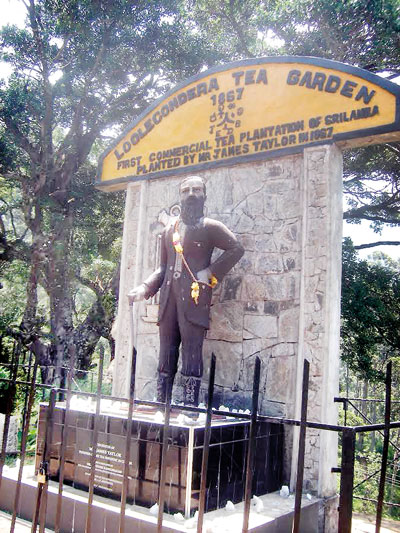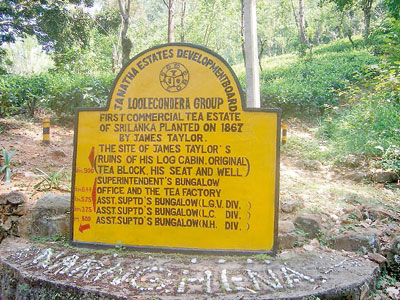Sunday Times 2
Raising a cuppa to Taylor
View(s): By Udumbara Udugama
By Udumbara Udugama
Rich or poor, most Sri Lankans wake-up to a cup of tea or a “kahata koppaya” to start the day. Some drink it with milk and sugar, others with less sugar or a piece of jaggery. A “kahata tey” with ginger and jaggery is favoured by many. The more health conscious prefer black tea or ginger tea without sugar.
The name James Taylor is synonymous with Ceylon Tea. It was back in 1868, that the first tea plant was planted by Taylor at Naranghena Division of Loolecondera Estate. Taylor’s determination, dedication and commitment helped to build a lucrative tea industry in Ceylon. May 2, 2017 marks Taylor’s 125th death anniversary.
Born to Michael and Margaret Taylor in Kincardineshire, Aberdeen in Scotland on March 29, 1835, James Taylor passed away on May 2, 1892 at the age of 57 years. He was buried in the Mahaiyawa cemetery, Kandy where his tombstone has been inscribed with the words, “Erected by his sister and many friends in Ceylon”.
Taylor arrived in Ceylon in 1852 at the age of 16 and proceeded to Loolecondera Estate in Deltota close to Kandy. He lived there under very trying conditions until a house with one living room was built for him in 1856. When the coffee industry crashed due to the leaf disease blister blight, Taylor in search of a solution to overcome his losses, in the early 1860s obtained tea seeds from Dr. G.H.K. Thwaites, Director of the Royal Botanical Gardens, Peradeniya. The tea seeds and young plants from Assam had been sent from the Botanical Gardens in Calcutta to Peradeniya in 1839.
Tea seeds were planted as hedges along roads and paths on Loolecondera Estate. Taylor’s experimental tea plantation was on 10 acres of land in the estate. The tea leaves were rolled by hand. In 1872, a fully equipped ‘Tea House’ was constructed by him and the following year the first shipment of 23 pounds of tea valued at Rs.56/- from Loolecondera Estate was shipped to London.
The Ceylon Tea Museum under the purview of the Sri Lanka Tea Board in Hantana, Kandy, only about 10 minutes drive from Kandy houses a collection of memorabilia of this pioneer tea planter.


